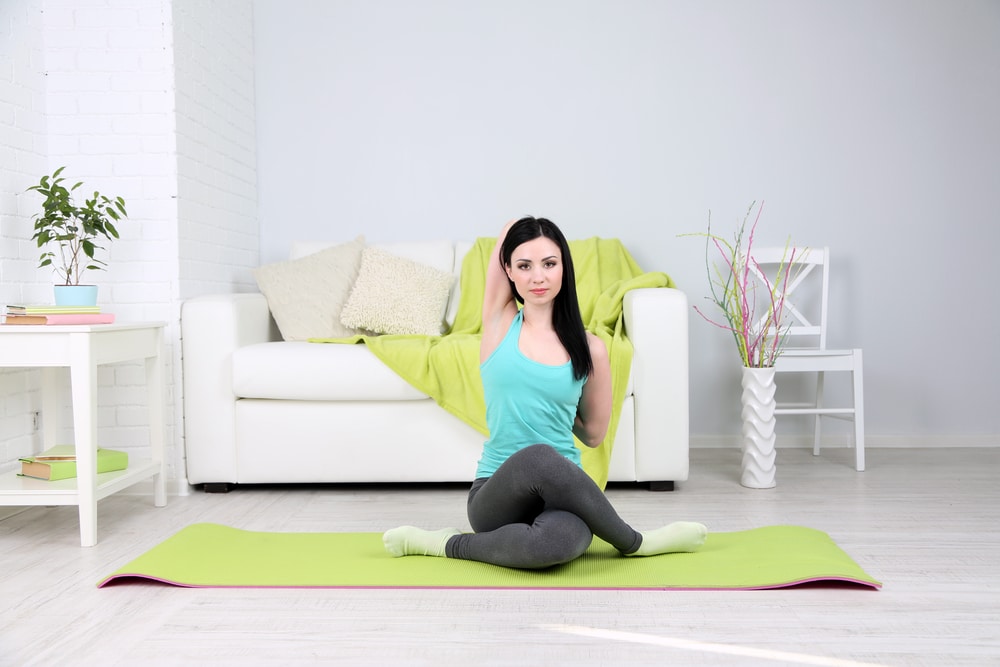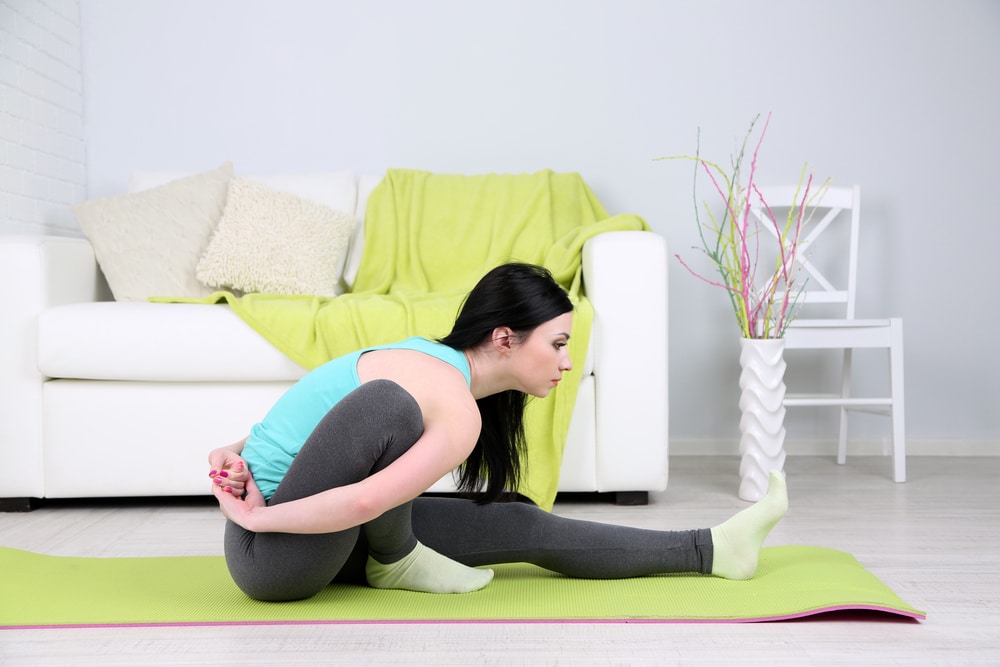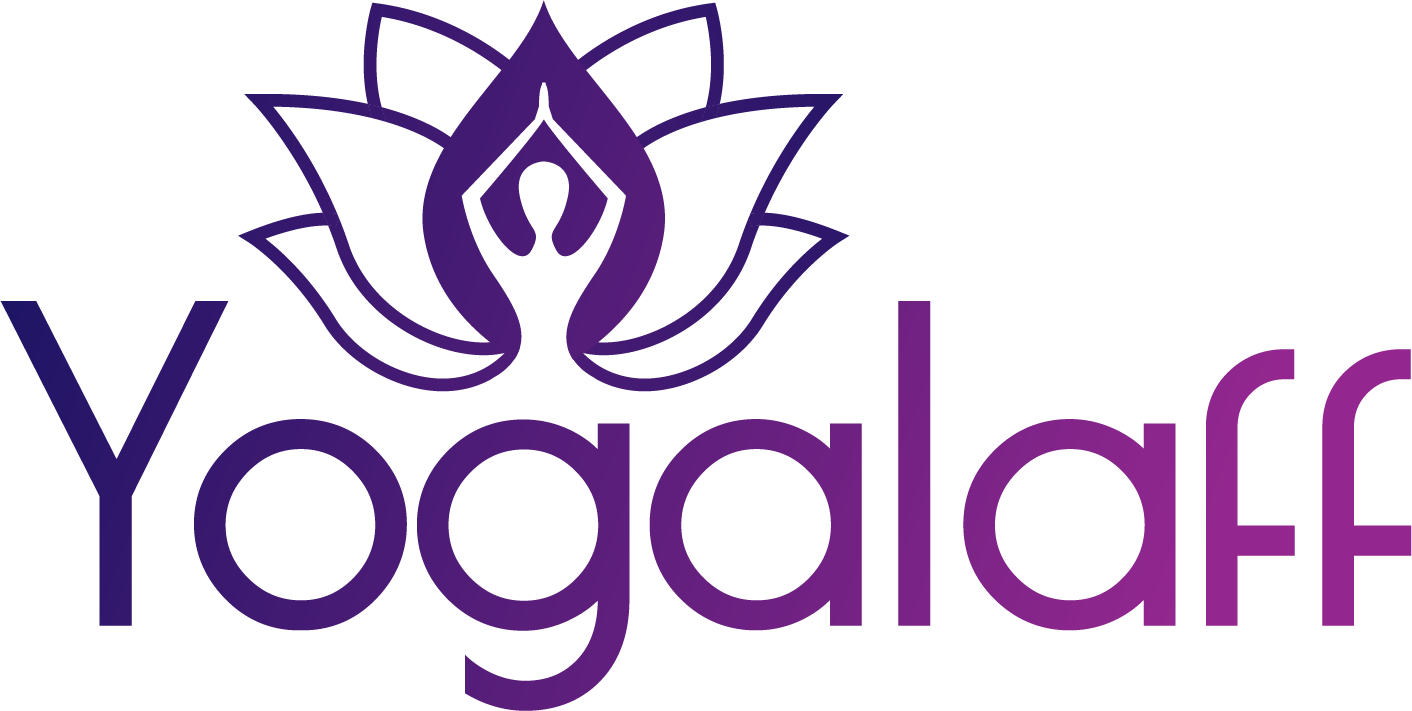Brand new yogis and seasoned practitioners alike are starting to wear yoga socks while on their mat.
Though people have practiced yoga barefoot for thousands of years, the inventors behind the concept of yoga socks could definitely be on to something!
The choice to wear them or not is completely dependant on your personal preference. While some may not be huge fans of wearing something on their feet while practicing, many people love the benefits and practicality of the socks.
So why exactly are yoga socks used?
How do you know if wearing them is the right choice for you?
Which yoga socks are the best options for you?
Keep reading to learn more!
What Are Yoga Socks?
 Let’s get down to the basics—what exactly are yoga socks? Simply, they’re just socks you wear while practicing yoga.
Let’s get down to the basics—what exactly are yoga socks? Simply, they’re just socks you wear while practicing yoga.
Similar to a regular pair of socks, yoga socks can be found in different lengths and styles—calf and ankle length, covering only half of the foot, covering just the ball of the foot, and even with individual sections for the toes.
Many yoga socks are made with natural cotton or bamboo, while some other options are made with blended materials. If you’re short on time, I’m a big fan of the Rahabsox Grips. These yoga socks include strong grips made from soft, flexible silicone designed to prevent you from slipping during class.
What Is the Purpose of Yoga Socks?
 The primary purpose of wearing yoga socks is to create a non-slip surface on which to practice. Though having a high-quality mat can certainly help with this, some people still have trouble staying in postures like downward facing dog and plank.
The primary purpose of wearing yoga socks is to create a non-slip surface on which to practice. Though having a high-quality mat can certainly help with this, some people still have trouble staying in postures like downward facing dog and plank.
For especially sweaty practices, like hot yoga, it can be incredibly difficult not to slip on your mat. Yoga socks have little grips on the soles of the feet to keep you from sliding around!
The best options are made of breathable material so that your feet don’t get overly sweaty or hot in your socks.
You can also find socks that cover only the ball of the foot with individual sections for each toe, exposing the heel and toes. This provides an excellent non-slip surface beneath the ball of the foot while also giving your foot plenty of room to breathe.
Many people enjoy having the extra grip while still feeling as though they’re barefoot. Though great quality mats are typically slip-proof, the floors of yoga studios are not!
When you’re practicing in a heated room with other people, it’s likely that sweat will drip onto the floors, making them incredibly slippery.
Yoga socks not only help keep you from slipping while you’re walking in and out of the room, but also if you’re doing a posture that might require you to step a foot off of your yoga mat like wild thing or fallen star.
Another excellent use for yoga socks is to keep your feet warm in non-heated classes. Some people might regularly have cold hands and feet, which can be a bit uncomfortable during yoga.
If you’re taking a gentle or meditation class where you won’t be building much heat in the body, wearing yoga socks will help keep your feet nice and cozy on the mat!
The overall protection yoga socks provide is a huge benefit. With so many bare and sweaty feet walking around the studio, some people may feel uncomfortable exposing their feet as well.
You just never know what could happen!
Ultimately, yoga socks allow you to be more present in your practice, taking away the possibility of distraction.
Should You Wear Socks During Yoga?
 While many people do love yoga socks, some yoga practitioners just aren’t fans.
While many people do love yoga socks, some yoga practitioners just aren’t fans.
If you prefer practicing barefoot but feel you need a little extra grip, you might try the socks that cover only half of the foot or only the ball of the foot.
If it doesn’t feel comfortable after a few tries of wearing them, perhaps it’s better for you to practice barefoot.
If you practice mainly gentle or restorative yoga where your feet may be cold during class, give the full sock a try and see how it feels to move with something on your feet.
Some people do say that the socks slip around on their feet or even come off completely while practicing, which totally takes away from their purpose.
Keep in mind that yoga socks are really meant to help make the practice more accessible and comfortable—if they’re making it more of a hassle then perhaps reconsider wearing them.
For others, yoga socks have absolutely changed their practice for the better. Postures, where they would normally slip, are more accessible. Because of that, they’re more present while practicing and have more confidence in their physical body, allowing them to push themselves to their edge.
What Else Should You Wear to a Yoga Class?
While practicing yoga, you really just want to be comfortable—whatever that means for you!
It has a lot to do with the type of class you’ll be attending. In a hot and sweaty power vinyasa class, some people wear shorts, some wear leggings, some people wear sports bras, and some wear t-shirts.
What will make you most comfortable?
Some practitioners sweat so much that they know the fewer layers they have on, the better. If you dislike the feeling of a loose, sweaty shirt rubbing against you as you move, a sports bra might be a more comfortable option, or even going shirtless for males.
Some people may like wearing shorts to help keep them a bit cooler while practicing in a heated room or in a power class. You might also wear biker shorts underneath for some extra coverage.
Others may feel it’s more comfortable or easier to keep from slipping if they’re wearing leggings. These can provide a little traction during arm balances, as well as peace of mind that you’re covered where you want to be!
In classes in a non-heated room where you won’t be building too much internal heat, you might wear leggings or even lightweight sweatpants. During gentle or restorative practices, some may wear long-sleeved t-shirts. You might also bring a light sweater to wear or layover you as you cool down in savasana.
Can I Wear Shoes During Yoga?
Ideally, you’ll want to be able to utilize the full range of motion in your feet. To stretch through and use each muscle is important during yoga.
In balancing postures, for instance, you want to be able to activate all of the muscles through the foot and toes in order to get the most out of each posture. Being able to grip the ground with your toes and feet is necessary to get the full spectrum of the practice.
Shoes can also get in the way of your practice quite a bit. Imagine sitting with your legs crossed while wearing shoes versus being barefoot or with socks on.
It certainly wouldn’t be the most comfortable pose to be in. There are also postures where you might want to grab the big toe individually, which wouldn’t be possible while wearing shoes.
While practicing barefoot or with yoga socks on is ideal to make the most of your practice, it isn’t completely necessary.
What if you’re in the park and you want to do a few postures after running?
What if you go for a hike and you’d like to spend a little time practicing in the woods or on a hill?
You can absolutely wear shoes if you’d prefer—particularly if you were doing a quick 10-minute practice or just a few postures. You’ll likely just get more out of the practice by being able to fully utilize your feet.
What Are the Benefits of Practicing Yoga Barefoot?
The most basic benefit of practicing barefoot is that you’ll truly be able to feel the connection between your body and the mat or the earth.
Your feet are the foundation of each posture, so the stronger and more firmly rooted they are, the better.
This direct connection not only allows the earth’s energy to flow through the body, but it also strengthens the feet. Often times, shoes can cause chronic pain in the body—in the knees, the hips, the back, and even in the neck.
Our feet were made to walk on the earth barefoot, so they have the proper cushioning and support needed already. As we wear shoes that might provide too much padding and not enough support, our feet weaken and lose mobility and flexibility.
The tiny little activations through the muscles of the feet that occur while practicing barefoot strengthen not only our feet but also the rest of our body.
We also have nerve endings and pressure points all over the feet. As pressure is applied in these areas, it can help strengthen the feet and, through reflexology, can even help rid the body of disease and other discomforts.
Another significant benefit of practicing yoga barefoot is the stability and balance that it brings to each posture. Being able to have your feet planted firmly on the ground is necessary for maintaining enough of a grip to keep you supported, stable and balanced.
Shoes can be a huge hindrance during your practice, and they can get in the way of finding proper alignment in the body.
Being able to see your bare feet while you practice makes finding proper alignment much easier, ultimately helping to prevent any possible injuries. Practicing barefoot versus wearing shoes typically helps makes postures more accessible as well.
What Types of Yoga Socks Are There?
 There is an endless amount of yoga socks available to choose from. Brands like Lululemon, Gaiam, ToeSox, Shashi, and Sweaty Betty have tons of great socks on the market.
There is an endless amount of yoga socks available to choose from. Brands like Lululemon, Gaiam, ToeSox, Shashi, and Sweaty Betty have tons of great socks on the market.
You can find yoga socks in calf or ankle lengths, covering only a portion of the foot, as well as with individual sections for your toes. With so many styles to choose from, it’s easy to find something that works for you.
Shashi makes socks with mesh on the top part of the foot to help keep your feet cool while you practice. They were also specially designed to have each sock fit either the left or right foot.
ToeSox has several half-toe pairs with individual sections cut out for each toe and the tips of the toes exposed. This helps you utilize the natural grip of your toes. You can find this same half-toe style from ToeSox with a half-foot sock as well. This allows your heel to be exposed, providing even more of a barefoot feel.
Lululemon makes a pair of yoga socks with cushioning placed on certain areas of the foot for extra support. These are great for practicing yoga as well as wearing with everyday shoes.
Gaiam makes several styles with the top of the foot exposed for a little extra airflow. These also have individual sections for each toe with the tips of the toes exposed. They also have a full-foot option if you’d like a little more coverage.
In general, no matter the style of the sock, they’ll typically have grips on the bottom to prevent slipping. The beauty of these socks with grips is that they’re great to keep from slipping on your mat, but they also make practicing without a mat much more accessible.
What Are the Best Yoga Socks to Use While Practicing?
Ultimately, if you decide that wearing yoga socks while you practice feels right for you, the style you choose simply depends on what works best.
Everyone is different, and every practice is different. What feels right for one person may not work as well for someone else.
If you’re practicing in a non-heated room, where your feet may get cold, you might want to try a full-foot sock, and see how that feels.
It can provide a little warmth as well as keep you from slipping and sliding on your mat. A full-foot option might also be best if you’re planning to practice without a mat—on hardwood floors in your home, for instance.
For more powerful classes or classes in a heated room, a full-foot sock may feel uncomfortable. Feeling sweat between your toes with no space for your feet to really breathe might not feel great, and it could be slightly distracting.
For these classes, a half-foot option or an option with individual sections for the toes might feel better. Being able to move your toes independently of one another and really utilize their grip strength to stay balanced and find proper alignment is a huge benefit to wearing socks with only partial coverage.
Finding what works best for you is always trial and error. Give a few different brands and styles a try to see what feels right for you!

